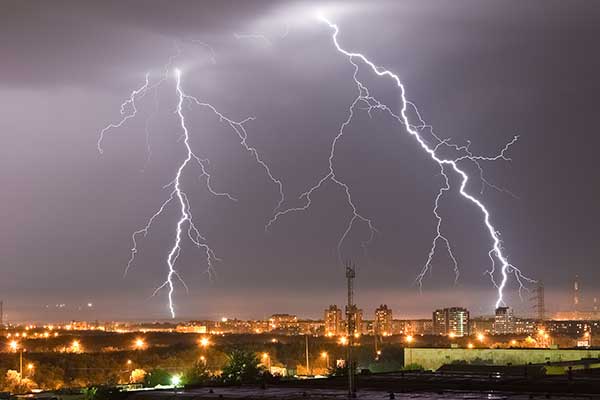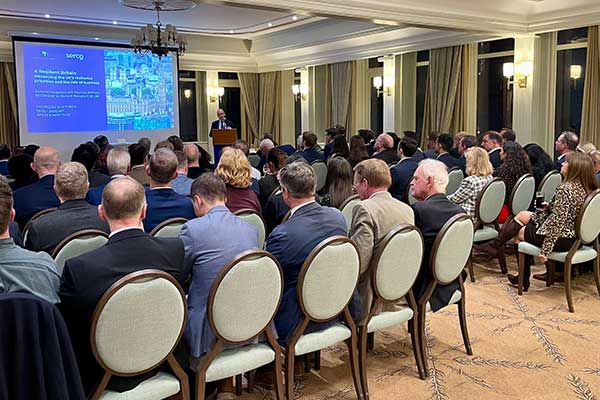Emergencies, such as sudden power outages, flooding or prolonged communication disruptions, test the resilience of our cities and businesses. Last week we were joined by critical infrastructure providers and explored how they manage incidents and coordinate with emergency services, local councils and other stakeholders.
The real challenge lies not only in acute shocks but also in the chronic risks that build over time, as resilience professionals stressed in our recent panel discussion, part of our London Business Networks for Resilience programme, supported by London Resilience.
Acute versus chronic risks
Michele Vianello from the London Resilience Unit opened the discussion by distinguishing between acute shocks (e.g. floods, fires, blackouts) and chronic risks (e.g. climate change, geopolitical instability).
Traditionally, resilience planning has focused on acute incidents. However, as Michele noted, many acute events are symptoms of deeper, longer-term chronic risks. For example, climate change doesn’t just increase the risk of flooding, it also makes flood events more severe. Similarly, geopolitical instability may not cause immediate disruption but creates conditions where future crises are more likely.
The London Resilience Unit is working in phases to address these challenges:
- Internal review: Mapping existing chronic risks mitigation measures within the wider Greater London Authority (GLA) and identifying gaps.
- External engagement: Commissioning consultants to consult with industry leaders and local partners.
- Public involvement: Listening to public concerns to define shared priorities.
The aim is to have a clear set of resilience priorities that London and its partners can act upon by summer 2026.
Essential services
Representatives from UK Power Networks, BT Group, Thames Water and Cadent Gas shared how they manage crises while maintaining essential services.
Electricity:
Stuart Ross and Nicola Smith of UK Power Networks highlighted the importance of communications and customer care during outages. Their Priority Services Register provides backup support, such as generators and battery packs, that many businesses don’t realise are available.
They also stressed the increasing interdependence of systems. Without telecoms, power restoration becomes far more challenging and vice versa. To prepare, UK Power Networks is investing in new telephony systems that remain operational even in extreme scenarios, ensuring they can continue coordinating repairs and supporting customers.
Action for businesses:
- Sign up for UKPN Priority Services Register
- Sign up for UKPN future text alerts
- Monitor the UKPN’s live power cut list and preparedness resources.
- Prepare for power cuts
If you are eligible, sign up for your energy supplier’s Priority Services Register PSR
Telecommunications:
Harvey Fawcett of BT Group underlined the mutual dependency between power and telecoms. Harvey explained that in the event of a major disruption, the situation would be managed under the BT Group crisis management process, which galvanises all parts of the organisation, including external communications, regulatory, and legal teams, to ensure everyone is aligned on messaging and response. He noted that while the telecoms sector does not have a direct equivalent to the Priority Services Register (PSR), it still has obligations to support vulnerable customers. Harvey also highlighted the transition from PSTN to digital voice, suggesting that businesses review the guidance available on the websites below to understand what this means for their operations.
Action for businesses:
- Learn about the digital upgrade and getting ready for digital phone lines, the shift of the Public Switched Telephone Network from analogue to digital
- Digital switchover hub | Local Government Association
- Public Switched Telephone Network charter – GOV.UK
- Diversify communication systems, don’t rely on a single provider.
Water:
Beth Reeves of Thames Water pointed out that while many businesses plan for power or telecoms outages, few consider water disruption. Yet water is vital not only for manufacturing and hospitality but also for simply keeping premises open.
Her current key concern is drought, noting that despite recent rainfall, London’s reservoirs remain low after the hottest summer on record. Thames Water are managing the overall water storage situation to help protect water resources as they look ahead to next summer. Water companies follow a staged response: from temporary use bans (e.g. hosepipes) to non-essential use bans that affect businesses, and in severe cases, drought orders.
In supply disruption emergencies, legislation obliges Thames Water to prioritise domestic needs, hospitals, prisons and care homes. Other businesses, unless critical, may face lower prioritisation and need to prepare accordingly.
Action for businesses:
- Treat water loss as a line item in business continuity planning.
- Explore backup options: onsite storage tanks, private tanker contracts or process adjustments for reduced water use.
- Understand that even when water is available at street level, internal pumps (reliant on electricity) may fail, cutting supply to higher floors.
- Use Thames Water’s service interruption website for live updates.
Gas:
Stephanie van Rosse of Cadent emphasised that the gas network is 99.99% reliable. However disruptions can occur, for example burst water mains causing water ingress or accidental damage during construction works.
Her advice to businesses was to think through scenarios of being without gas for one hour, one day and one week. Large businesses may already have alternative supply arrangements, but SMEs need simple contingency planning.
She also highlighted the importance of:
- Knowing who your gas distribution network is (in London: Cadent north of the Thames, SGN south of the Thames).
- Ensuring staff know the Gas Emergency number: 0800 111 999, which is free and 24/7
- Locating and understanding your own gas meter and assets, since shutting them off can prevent further damage during an incident.
Action for businesses:
- Incorporate gas disruption into continuity planning across short, medium and longer-term horizons.
- If planning construction or building works, check gas pipe locations via gas distribution network website or Linesearch BeforeUdig
- Maintain updated emergency contacts for utilities and borough resilience forums
Resilience isn’t only about government or infrastructure, it is about every organisation taking small, practical steps to prepare. By planning for service disruptions and engaging with local networks, businesses can protect both their operations and the communities they serve.
With many thanks to all the speakers:
- Harvey Fawcett, Operational Resilience and Assurance Lead for BT Group
- Beth Reeves, Business Resilience Lead, Thames Water
- Stuart Ross, Dispatch Duty Shift Manager, and Nicola Smith, Dispatch Trainer and Systems Tester, UK Power Networks
- Stephanie van Rosse, Media Relations Manager, Cadent
- Michele Vianello, Resilience Manager – Prevention, London Resilience



